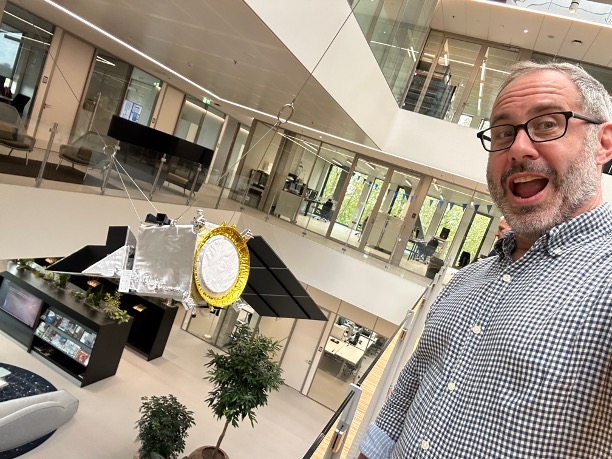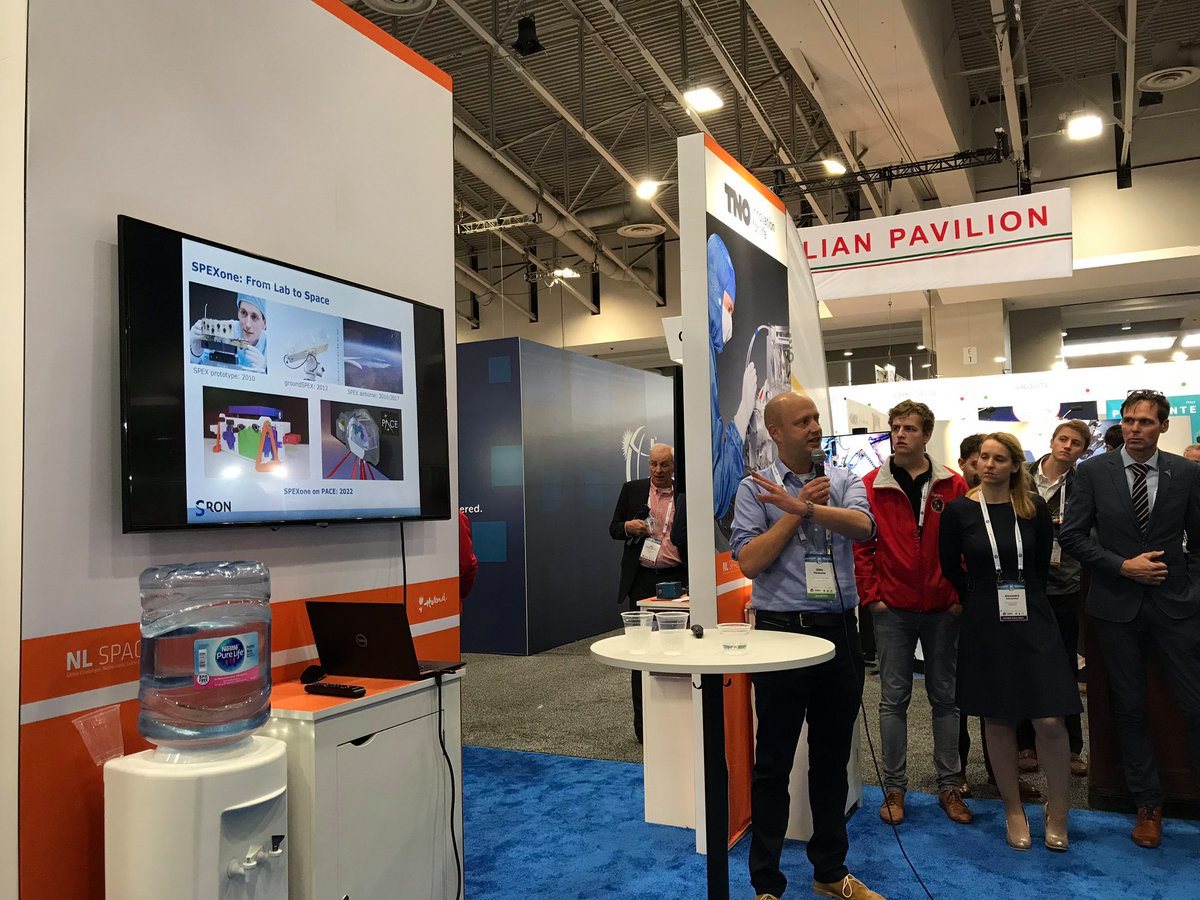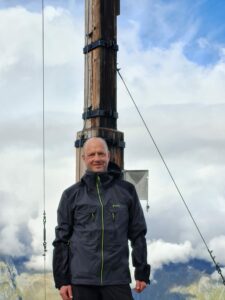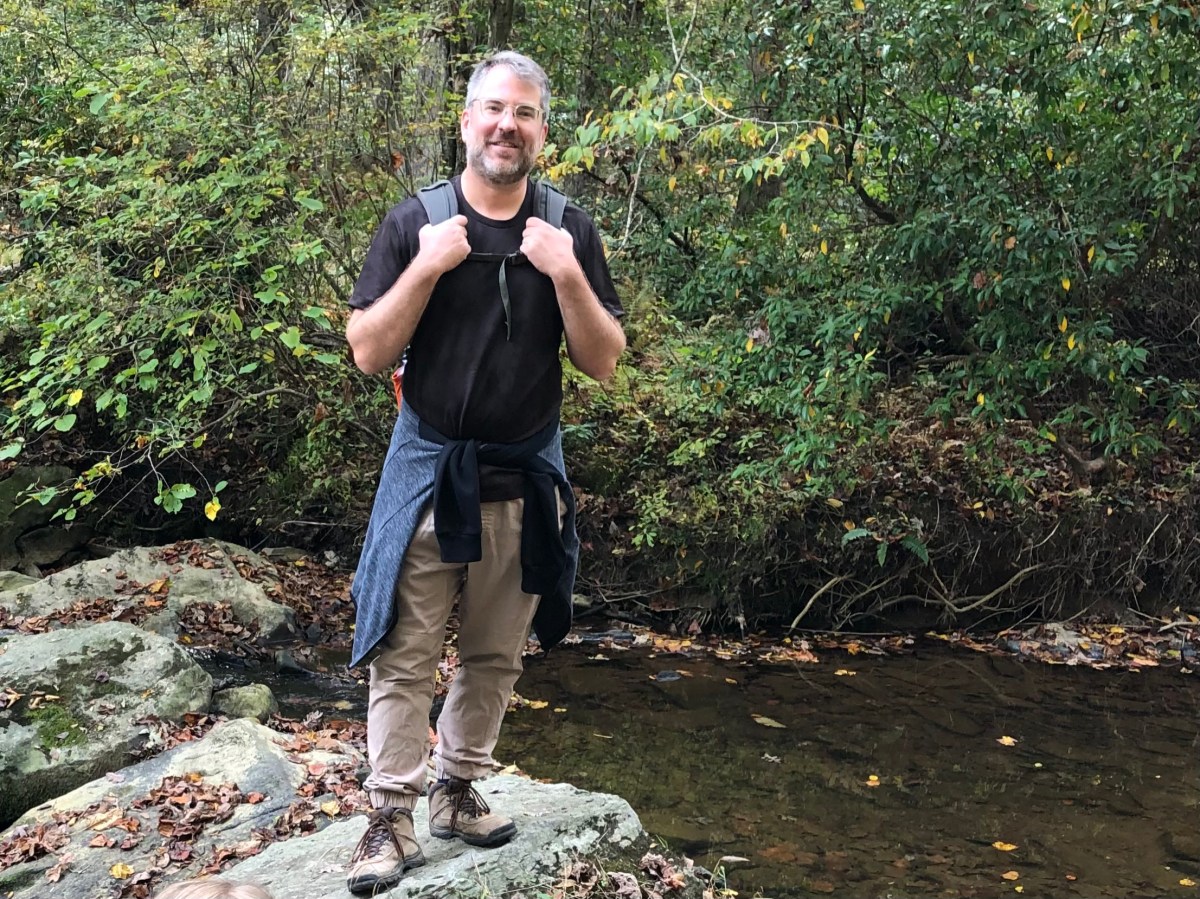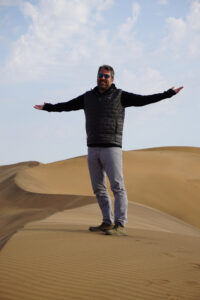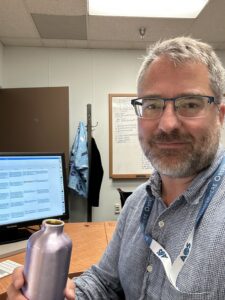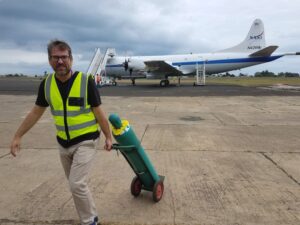Jeremy Werdell is the project scientist for the PACE mission as well as a biological oceanographer in the Ocean Ecology Laboratory at NASA’s Goddard Space Flight Center in Greenbelt, Maryland.
What is your favorite ocean- or atmosphere-related book or movie?
“Jaws!” And it’s not close. “Jaws.” Best movie, without question, ever made.
What are you most looking forward to on the night of launch?
The operation of the spacecraft and instruments. I am going to be an absolute nervous wreck the entire time and it won’t be until systems engineering and project management tell me that everything is okay and that the fun is now going to begin that I will finally breathe easy. So, yeah, the transition from “holy crap” to “it’s all working!”

What are you most looking forward to after the night of launch?
Watching the energy emerge within and across our communities. I’m enjoying taking on the role of making sure the mission is as good as it can be so that it’s something our community can grow into. It is a gift from NASA and the government and community that preceded me to this next generation of scientists that can and will do something amazing.
The Ocean Color Intrument (OCI) on PACE is going to to show us colors of the ocean in a hyperspectral range, which is like using a box of 256 crayons instead of the previous boxes of 8 colored crayons. So, of all the colors in the large crayon box, what is your favorite color and why?
Green, and specifically the wavelength 532 nanometers. That exact green, for two reasons: One, for some weird reason, my family, including my wife, all jibe with green. Two, when I first started a master’s degree at the University of Connecticut, I was learning how to use a spectrophotometer and my advisor, Collin, pointed out a green beam within it and said “532 nanometers, it’s a beautiful color.” That has always stuck with me.

What’s a fun fact about yourself that not a lot of people might know about you?
I tell almost anybody who will listen that I’d rather be a professional chef than a scientist. In fact, I even have a chef’s knife tattoo now.
I’ll cook anything. I use cooking as therapy – my mental health improves by just standing in the kitchen after work. My wife and I started cooking as a couple when we first had kids because we weren’t leaving the house as often. But, eventually I kind of just elbowed everybody else out of the kitchen and spent most of my time there.
What is some advice that you would give to aspiring scientists that are looking to be where you are today?
Three things. The one thing that I think got me to where I am within Goddard was the opportunity when I was early in my career to spend a lot of time writing papers and interacting with the science community, including organizing workshops. I had a lot of latitude to get out and about, above and beyond my day-to-day activities. I found that writing and external engagements to be very good ways to get the community to know me.

The second thing, which I tell any early career scientist that will listen, is to serve on as many research panels for NASA headquarters as you can. It’s very empowering to sit on the other side of the table and digest the evaluation side of the process. What you learn from doing this really improves the quality of the proposals that you write and, whether anyone likes it or not, being successful in “proposal land” does have its advantages in terms of career advancement.
Third, public speaking. Spend as much time getting out of your comfort zone and talking to anybody who will listen in front of any stage. I can’t stress this enough. Start when you’re in high school. I know most kids hate standing in front of the audience, but you will be so much better at what you do if you can do this. Even if you’re not good at it, don’t fret, just keep at it and find some comfort with it. Eventually the quality will come.
What is one catch-all statement that you would say describing the importance of PACE?
All citizens of the Earth should realize everything is connected: land, ocean, and atmosphere. PACE is NASA’s next great investment in the combined studies of all these aspects of the Earth’s system. With its capabilities, there’s so much scientific growth that will be accomplished, which makes PACE incredibly important to how we understand what we’re doing to our home planet.

Header image caption: Enjoying the PACE scale model on display at SRON in the Netherlands. Credit: Jeremy Werdell/NASA
By Erica McNamee, Science Writer at NASA’s Goddard Space Flight Center

